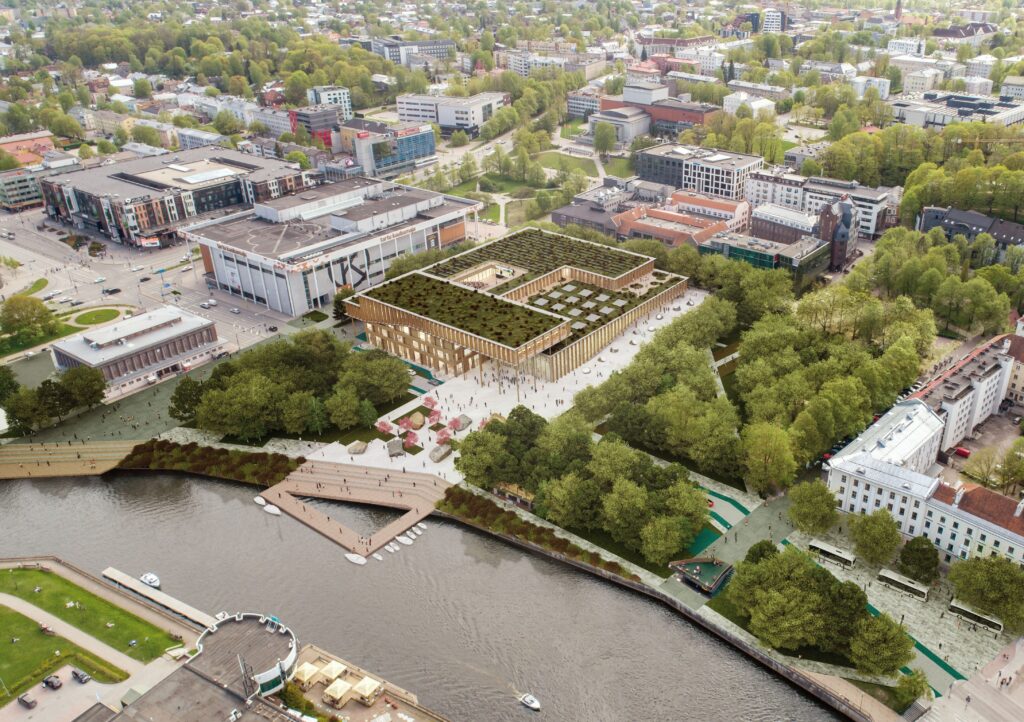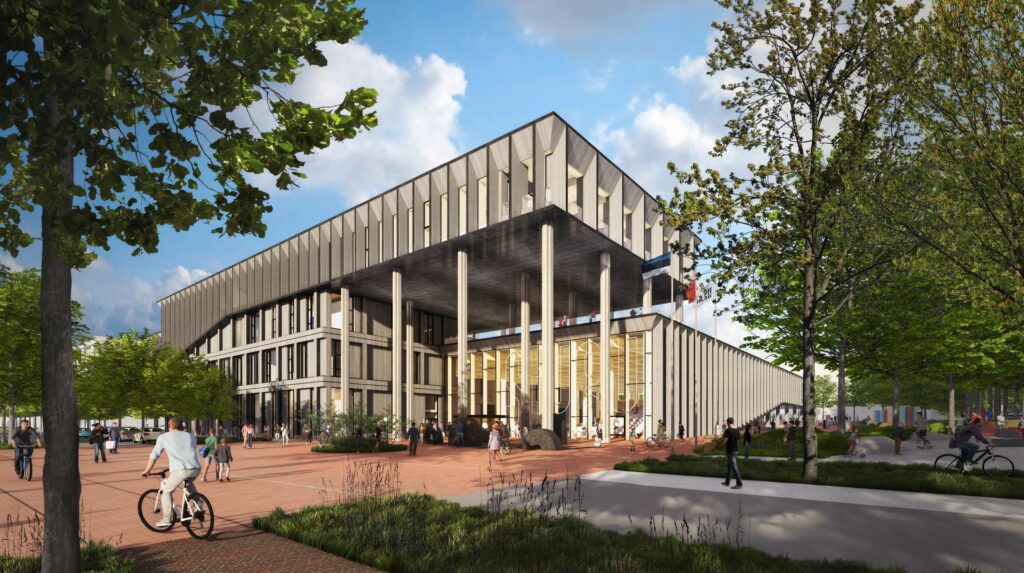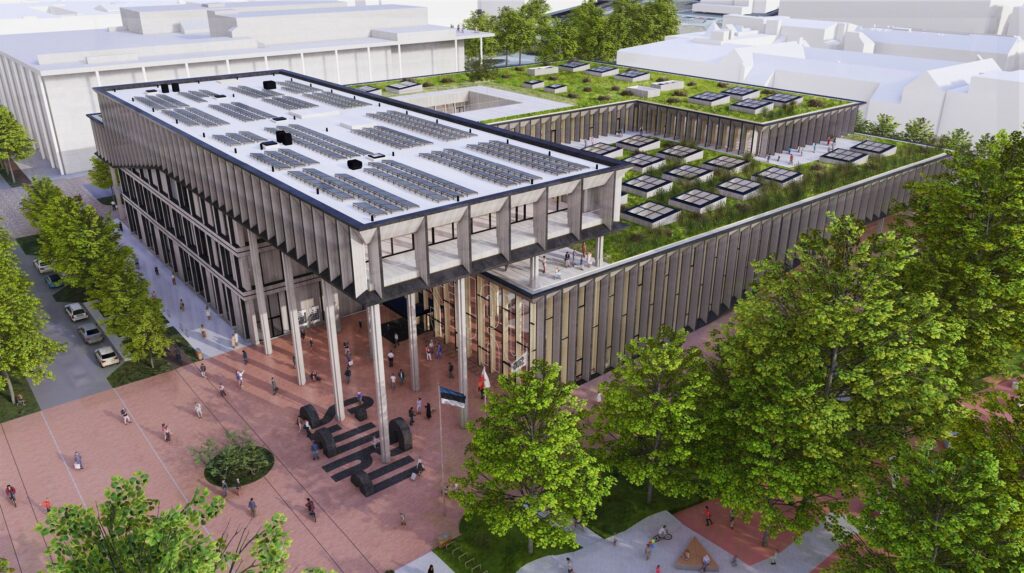The idea of building a €100 million Siuru Centre in the heart of Tartu might be sold as a beacon of culture and progress; in truth, it is a mirage – a monument to ego and excess at a time when Estonia needs neither.
Tartu already hosts the monumental Estonian National Museum – an €80 million complex of striking design and cavernous emptiness. To add another giant structure in the town’s central park, only costlier, feels less like cultural vision and more like architectural hubris.
Concrete doesn’t create culture
Estonia has an old habit of confusing construction with culture – a legacy of the Soviet era’s colossal, soulless buildings, through which the occupying power sought to stamp its mark here. The assumption seems to be that creativity begins only when the concrete sets and a ribbon is cut. Yet real culture has never come from marble floors or glass façades – it comes from people.
Yes, Tartu’s art museum and library deserve better spaces. But a town of 100,000 people, whose true wealth lies in its intellect and imagination, does not need a €100 million box in the park to prove its cultural worth.
Supporters like to note that the project has been “maturing” for a decade. That hardly helps its case. The Estonia of 2025 is not the Estonia of 2015: the economy is tighter, the population smaller and the security environment infinitely more fragile.
The Siuru Centre would be financed almost entirely with public money – two-thirds from the Estonian Cultural Endowment and one-third from the town of Tartu. In other words, taxpayers would foot the bill for a €100 million cultural complex at a time when artists and cultural workers are struggling to stay afloat. Estonia is not Germany, nor even Denmark. We are a country of 1.3 million people who can no longer afford the illusion that money grows on pine trees.

The false logic of scale
Defenders of the Siuru plan describe it as a once-in-a-generation chance to “repay a debt to culture” – an act of faith that bold architecture can elevate the arts and, through commercial activity, even sustain itself. In their vision, cafés, bookshops and event spaces would create a lively cultural ecosystem, their rent and revenue helping cover the centre’s running costs.
The logic sounds tidy, but it collapses under scrutiny. Those revenues would only pay for the commercial premises themselves – not the library’s or art museum’s expanding costs, nor the long-term upkeep of such a vast complex. In reality, the town would be left carrying the financial burden for decades, school renovations would be delayed, and the very cultural workers this project claims to celebrate would remain among the lowest-paid in the country.
The Helsinki illusion
Proponents point to Helsinki’s Central Library, Oodi, which cost a similar amount. But that’s a false equivalence. Helsinki is seven times larger than Tartu, fifteen times larger if you count the metropolitan area, and the capital of a nation five times Estonia’s size. Finland’s GDP per capita is nearly twice as high. Comparing the two is like comparing a small fishing boat to a ferry and calling them equals.
And besides, Siuru is not Oodi. Only about a third of its planned floor area resembles Oodi’s open, civic concept. The rest would be consumed by underground car parks, retail units, offices, a cinema and commercial space. The library – the supposed heart of the building – would be buried inside a vast structure buzzing with activity more akin to a shopping mall than a sanctuary of thought.

Even some of the project’s own supporters have quietly admitted that the Siuru Centre has lost touch with proportion. The building’s scale could be halved without harming its mission. In truth, the library and museum would work far better as cultural magnets if housed in warm, human-scale spaces rather than surrounded by vast, empty plazas and retail units.
That reflection captures what many in Tartu already sense: the town’s soul lies in intimacy, not monumentality.
A familiar mistake
Estonia keeps returning to the same pattern – the belief that national identity must be reinforced with ever-bigger structures. From Tallinn’s “great hall” proposals to Tartu’s National Museum, we’ve confused cultural presence with physical mass. The results are impressive on postcards but less so on balance sheets.
If we want to nurture culture, the answer lies in supporting the people who create it – with fair wages, space to work and the security to stay. Another oversized building solves none of those problems.
Tartu doesn’t need a monument; it needs imagination. A modest, energy-efficient renovation of the existing library and museum could achieve everything the town requires – without turning its last central green space into a shopping-centre-sized structure.
A town of ideas should not measure its worth by the size of its buildings, but by the depth of its thought.
Tartu’s strength has never been in concrete. It has always been in mind.
The opinions in this article are those of the author.

